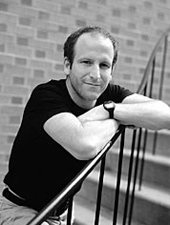Reinagel, P., Zador, A. M. (1999) Natural scene statistics at the centre of gaze. Network: Computation in Neural Systems, 10 (4). pp. 341-350. ISSN 0954898X (ISSN)
Abstract
Early stages of visual processing may exploit the characteristic structure of natural visual stimuli. This structure may differ from the intrinsic structure of natural scenes, because sampling of the environment is an active process. For example, humans move their eyes several times a second when looking at a scene. The portions of a scene that fall on the fovea are sampled at high spatial resolution, and receive a disproportionate fraction of cortical processing. We recorded the eye positions of human subjects while they viewed images of natural scenes. We report that active selection affected the statistics of the stimuli encountered by the fovea, and also by the parafovea up to eccentricities of 4°. We found two related effects. First, subjects looked at image regions that had high spatial contrast. Second, in these regions, the intensities of nearby image points (pixels) were less correlated with each other than in images selected at random. These effects could serve to increase the information available to the visual system for further processing. We show that both of these effects can be simply obtained by constructing an artificial ensemble comprised of the highest-contrast regions of images.
| Item Type: | Paper |
|---|---|
| Subjects: | bioinformatics > computational biology organism description > animal behavior > vision organism description > animal behavior > visual |
| CSHL Authors: | |
| Communities: | CSHL labs > Zador lab |
| Depositing User: | Leigh Johnson |
| Date: | 1999 |
| Date Deposited: | 27 Mar 2012 20:54 |
| Last Modified: | 23 Feb 2017 21:07 |
| Related URLs: | |
| URI: | https://repository.cshl.edu/id/eprint/25623 |
Actions (login required)
 |
Administrator's edit/view item |
